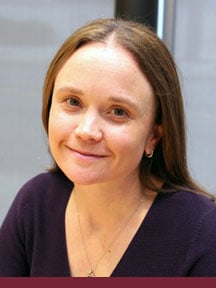
Written by Elizabeth Gehrig
 By Elizabeth Gehrig • July 19, 2016
By Elizabeth Gehrig • July 19, 2016
Picture a writer of multiple-choice exam questions. Who do you see? Someone who cackles with glee when she comes up with a really tricky question? Or maybe Mr. Burns from The Simpsons, muttering “Eeeexcellent” when he sees a question that has no answer?
You’ll be relieved to know that these are not the people who create your course exams. In fact, trick questions can ruin the day of an exam developer; we loathe trick questions and avoid them at all costs. This means that we avoid questions with double negatives, ambiguous meanings, no clear answer, two correct answers when there should be one, overlapping answers and many other problems.
So, when you’re answering a multiple-choice question, what’s the best way to proceed? Here’s some valuable advice, straight from the people who spend all day thinking about these things.
Read the question twice to make sure you know what it is really asking. Then, see if you can mentally come up with the right answer before you look at the answer choices; many questions are written in a way that gives you a chance to do this.
It helps if you already have an idea what you’re looking for. If you aren’t sure, read each choice and consider it. If two choices seem like they could be correct, choose the one that seems stronger. Ask yourself, is there anything about one of these choices that doesn’t sound 100 percent right?
We try not to ask too many questions about what’s NOT true, or for an exception. But if you do get one, read the question two or three times to make sure you really understand what it’s asking. Then keep the question in mind as you read through the answer choices, making sure that the answer you choose is answering the negative question.
You won’t see many questions with “All of the above” answer choices, but if you see it, don’t assume it’s right. Look at the other choices: are there two choices that are incompatible with each other? If so, they can’t both be right, so “All of the above” won’t be right. At the same time, if you see two answer choices that you’re sure are both correct, then you’ll know that “All of the above” is the answer.
On TECEP® and course exams, it’s better to guess than to leave a question unanswered. You might not get a point for the question, but you won’t be penalized for a wrong answer. If you really don’t know the answer, see if you can eliminate some of the choices, and then take your best guess.
Remember the old adage that “C” is the most common answer? Test developers have heard it, too, so we make sure that there aren’t more “C”s than other answers on a test. So, don’t immediately guess “C” unless you think it’s your best guess.
A test question should test your knowledge, not your knowledge plus your ability to understand a badly written question. Exam developers know this, so we try hard to make sure that every question is high quality, straightforward and fair. All of this might be less exciting than what you first imagined, but we think that’s a good thing!

Written by Elizabeth Gehrig